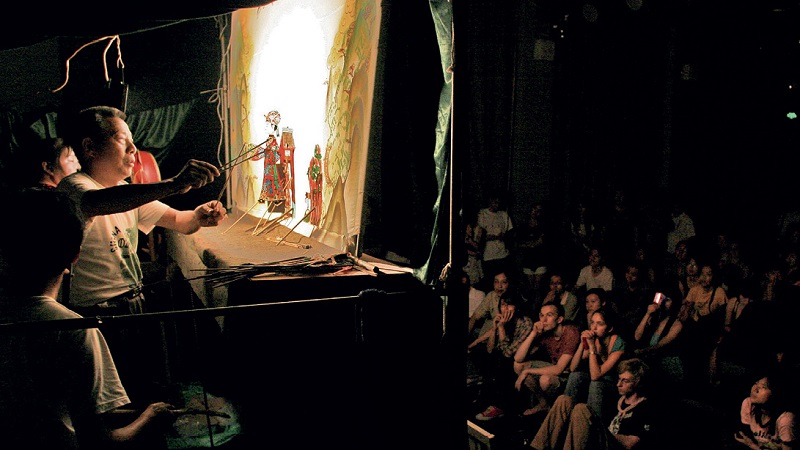
In Huaxian and its surrounding counties, shadow puppetry troupes are always invited to perform at weddings and funerals.

Shadow play is a form of opera that is performed by musicians that manipulate puppets to tell a story whose shadows are cast on an illuminated screen. This form of theatrical art is popular across China. Shaanxi is recognized as the birthplace of Chinese shadow puppetry. In 2006, the ancient art was included in the first batch of China's national intangible cultural heritage items.
More than 2000 years ago, Lady Li, beloved concubine of the Han Emperor Wudi, died of an illness, causing the emperor to grieve much. The minister Li Shaoweng came across a child playing with a rag doll one day, and the shadow was cast on the ground. This inspired him to make a puppet of Lady Li’s silhouette and let Emperor Wudi watch its shadow at night. The emperor was so amazed by the puppet’s posture that he thought his concubine had came back to life. This love story, recorded in The Book of Han, is considered to be the earliest description of shadow puppetry.
According to historical documents, Shaanxi’s shadow play originated in the Weihe River Basin in the Han Dynasty (206 BC-AD 220) and then spread from the Yellow River Basin to the rest of the country. The Song Dynasty (960-1279) saw its heyday and its popularity continued into the later dynasties.
Huaxian shadow puppet opera band is also called “wu ren mang,” meaning five occupied people. Qiansheng, equivalent to the conductor and the lead singer, is the most important role. He not only sings for every puppet character in the play, but also plays the yueqin, a traditional string instrument also known as the moon guitar, and drum as well. Another band player is qianshou, who is responsible for manipulating the puppet performance and assisting “qiansheng” with singing. Zuocao, usually sitting at the back plays gongs, bowls, and clappers. The other two players are shangdang who plays erhu, a two-stringed bowed instrument, and the wind instrument suona, and xiadang who plays banhu, also a two-stringed instrument, and cooperates with the qianshou. The five players’ hands and feet are all occupied and utilized in the performance with a dozen musical instruments used in the play.
The production process of the Huaxian shadow puppets is extremely complicated and can be generally divided into several basic steps, such as hide selection, hide processing, sketching, carving, coloring, dehydration, and sewing. The carving skills utilized in Huaxian shadow puppets is staggeringly unique: moving the hide while keeping the knife still. This technique is extremely difficult to acquire, yet the lines produced by this method are smooth and elaborate. The basic color of Huaxian shadow puppets are red and green, complemented by black, the yellow color of the cowhide, and the white color of the hollowed-out part. Therefore, a total of five colors are featured, which is the embodiment of the five primary elements in Chinese philosophy and five colors believed to be primary colors by the Chinese people in the past.
There are still a number of shadow puppet players in China who are committed to this art, not only to keep alive the traditional shadow puppet production techniques and shadow puppet performance, but also to draw on domestic and international artistic elements to create new forms to present shadow puppets, such as animations and stage plays. Shadow puppet makers and players are providing fresh ideas for subsequent preservation and inheritance of this time-honored art.